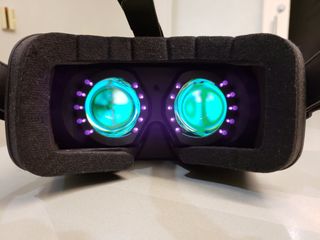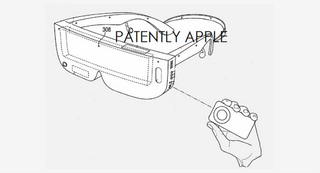Why rumors of an Apple VR headset are so damn exciting

Everyone knows Apple is publicly favoring augmented reality over virtual reality, but that doesn't mean the company has no interest in the fully occluded experiences you get from your average VR headset. Apple is a company known for prototyping many different products, with only the best seeing the light of day, so news that a wireless headset is being worked on in secret at Apple shouldn't be a shock.
Quoting CNET's Shara Tibken:
Apple's headset would connect to a dedicated box using a high-speed, short-range wireless technology, according to a person familiar with the company's plans. The box, which would be powered by a custom Apple processor more powerful than anything currently available, would act as the brain for the AR/VR headset. In its current state, the box resembles a PC tower, but it won't be an actual Mac computer.

This article describes a headset capable of VR and AR experiences with an 8K-per-eye display which connects wirelessly to a standalone box. Should Apple decide this headset is ready to be a consumer product, the rumor is it wouldn't be a thing until 2020. Which makes sense, because the wireless tech needed to drive a headset like this isn't going to be ready until 2019 at the earliest. Outside of that hardware requirement, there are a few unique things Apple could bring to a headset like this to make it stand out in a serious way.
- Display quality: If there's one thing you can universally say about Apple's products right now, it's how great the displays are. The real-to-life color quality is something that matters even more in VR and AR experiences than it does on a phone in your hand, and the use of an 8K display would target a desire to never ever see the "screen door" caused by so many headsets today. Apple could be the company behind the VR headset offering the most realistic experience just on its display quality.
- Apple-made processor: As we've seen with the iPhone and iPad, Apple is very good at squeezing quite a bit out of its internally designed processors. A headset powered by uniquely Apple hardware would create an opportunity for unique VR and AR experiences powered by chips that appear less capable on paper while outperforming the competition. And as the conversation regarding Apple and Intel splitting up continues to grow, custom chips for bigger computers starts to make a lot of sense.
- Inside-out tracking: Following the rumor that this headset would not only be wireless but also require no external tracking hardware, it seems likely Apple would lean on lessons learned from ARKit to make that tracking more accurate. With motion sensors in the headset and ARKit-capable cameras on the front, Apple would be able to use the existing ARKit systems to build a tracking system which rivals what is currently available.
Are we going to see an Apple headset with VR and AR features operating together? It's too soon to tell, but with reports of headset sales passing 20 million last year there are a lot of good reasons to make something great as this space grows.
Master your iPhone in minutes
iMore offers spot-on advice and guidance from our team of experts, with decades of Apple device experience to lean on. Learn more with iMore!
Russell is a Contributing Editor at iMore. He's a passionate futurist whose trusty iPad mini is never far from reach. You can usually find him chasing the next tech trend, much to the pain of his wallet. Reach out on Twitter!

Want better iPhone photo quality without taking up lots of storage? You’re not using your 48MP camera properly unless you use this HEIF Max tip

2024 "might be a turning point for Apple" — suppliers look elsewhere as Apple faces "frightening" question with no clear answer

Apple's entire M4 Mac lineup just leaked — here's where Apple is taking computing next
Most Popular






